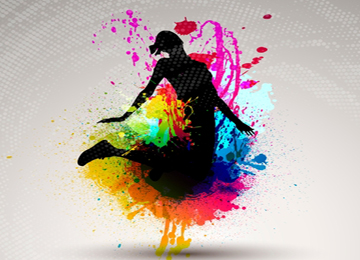
Blog
The Use of
Feminism in
Advertising
By: Stephanie Walton
(Since the term “feminism” is such a controversial one, it’s worth defining before we get started. By “feminism,” I’m referring to the cultural conversation on empowering women to pursue the life they want – whether career, family, or both – in a manner that does not place them under existing expecations for how women are supposed to behave in any arena.)
It started with that infamous TED Talk in 2010. Then in 2012, Anne Marie Slaughter made us all realize we were chasing something that doesn’t exist. 2013 brought the TED Talk follow up, Lean In, right after Beyonce performed at the Superbowl and began ruling the world. Jennifer Lawrence talked about body image with Marissa Meyer. We were blessed with heroines like Peggy Olson, Claire Underwood, and Olivia Pope. Then Beyonce struck again in late 2013 with her secret album after some inspiration from Chimamanda Adichie. And don’t even get me started on Tina Fey and Amy Poehler.
It wasn’t long before advertisers caught on. The internet went crazy last year over Dove’s Real Beauty Sketches but Evolution, the first piece in this campaign, came out in 2006 when the new “feminism” was just a dull roar. Now, Pantene is talking about double standards in their Labels Against Women spot, endorsed by Sheryl herself, and they just released a new one about saying sorry. The LeanIn organization told us to Ban Bossy. Goldiblox is encouraging girls to start building like boys and Verizon tried to replicate the concept with Inspire Her Mind. GoDaddy even picked up the hint that no one was interested in their overtly sexual gig anymore and Google has recently taken a stance against pornographic ads!
It doesn’t come as a surprise that advertisers would figure out how to use feminism to sell stuff. But some people aren’t happy about this. They say brands are cheapening the cause in order to promote shampoo.
We Needed a Change
Let’s step back for a second and talk about Miss Representation (currently on Netflix so you should go watch it immediately) – a brilliant documentary that unpacks how the media and advertising industries make a significant amount of money exploiting women through sexually explicit imagery. The documentary also argues that this exploitation of women in the media has a direct impact on the number of women in leadership and politics. Clearly, something needs to change.
Now let me just say that I love this industry. And rather than make me feel that I am a part of an evil juggernaut that must be crushed, Miss Representation made me see just how much power this industry has – for good and for bad. The stories we choose to tell to help our clients has a direct impact on power dynamics in this country.
So I’m going to “lean in” (you’re welcome, Sheryl!) and say that I’m choosing to dive deeper into this industry and participate because I see the opportunity to contribute to the flourishing of the world by telling stories of empowered women.
Lucky for me (and for all of us), the industry has already started moving in this direction.
Do we really want to go back to the pre-Dove days?
For my entire life, the only hair commercials I can ever remember watching were ones similar to Gisele dancing around with gold balloons for Pantene. Ironically, this commercial was released in December 2013 at the same time as Pantene’s Labels Against Women hit. Gisel, apparently, was specifically chosen because she is the “modern muse of multitasking”, but this commercial falls flat for obvious reasons. Just compare the number of YouTube views.
In an ideal world, showing empowered women in empowering situations would be so ordinary you wouldn’t even recognize it as something to write a blog post about. But that is not the case yet. So in the mean time, even if advertisers are just riding on Sheryl and Tina’s coat tails, I’m happy to see that feminism sells. It’s good for business and it’s good for the little girls (and big girls, and big boys) who are watching these commercials.
